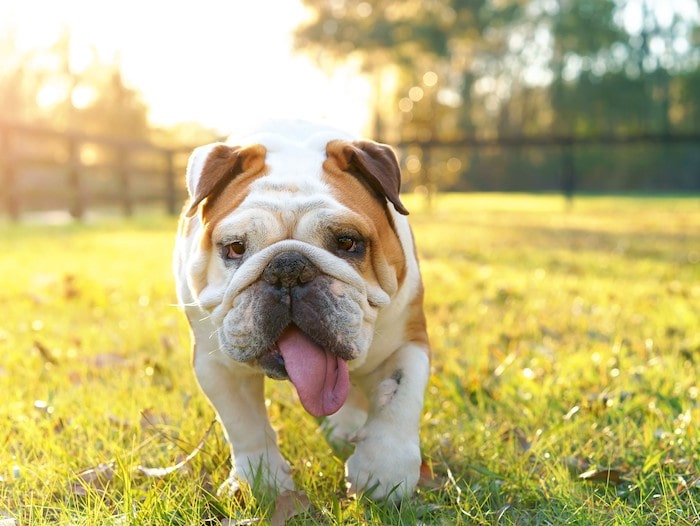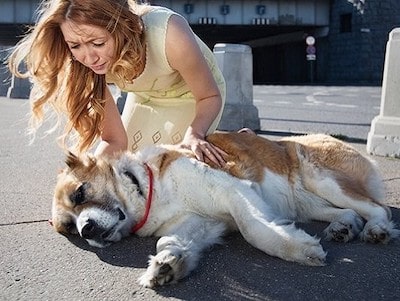As the temperature rises and the summer months approach, it’s crucial for dog owners to be aware of the potential dangers of heatstroke in their furry companions. A recent study commissioned by the esteemed animal welfare charity, Dogs Trust, has shed light on a concerning fact: exercise is the most common cause of heatstroke in dogs.
This revelation serves as a stark reminder of the importance of taking preventative measures and understanding the risks associated with exercising our beloved pets during hot weather.
In this article, we delve into the study’s findings and explore practical tips to keep our canine friends safe and cool throughout the summer season. By being informed and proactive, we can ensure our dogs remain healthy, happy, and protected from the potentially fatal effects of heatstroke.
What Causes Heatstroke in Dogs?
Heatstroke occurs when a dog’s body temperature exceeds its normal range of 38-39°C (100-102°F). This can happen when a dog is exposed to high environmental temperatures, such as in a car or a sunny spot, or when a dog exercises too much in hot weather.

Unlike humans, dogs cannot sweat through their skin to cool down. They rely on panting and releasing heat through their paw pads. However, when the air and ground temperatures are too high, panting and paw pads are not enough to keep them cool. Their body temperature rises and they overheat.
According to Dogs Trust, the most common cause of potentially fatal heatstroke in dogs during the summer months is exercising in hot weather. A veterinary study commissioned by Dogs Trust found that 74% of heatstroke cases in dogs were caused by activities such as walking, playing, or running with their owners. Out of these cases, 68% occurred after simply walking in the heat.
Some dogs are more prone to heatstroke than others. These include:
- Older dogs
- Overweight dogs
- Dogs with thick or dark coats
- Dogs with short noses or flat faces (such as pugs, bulldogs, or boxers)
- Dogs with medical conditions that affect their breathing or heart function
How to Recognize The Signs of Heatstroke in Dogs?
Heatstroke can develop quickly and can be life-threatening if not treated promptly. Therefore, it is important to know the signs of heatstroke in dogs and act fast if you notice them. Some of the signs of heatstroke in dogs are:
- Heavy panting
- Excessive drooling
- Lethargy or weakness
- Vomiting or diarrhea
- Reddened gums or tongue
- Rapid heartbeat
- Confusion or disorientation
- Collapsing or seizures

If you suspect your dog has heatstroke, you should:
- Move your dog to a cooler place, preferably with a fan or air conditioning
- Offer your dog cool (but not cold) water to drink
- Wet your dog’s coat with cool (but not cold) water or place wet towels on their neck, armpits, and groin
- Avoid using ice or very cold water as this can cause shock or worsen the condition
- Contact your veterinarian for advice and follow their instructions
- Monitor your dog’s breathing, pulse, and temperature until you reach the vet
How to Prevent Heatstroke in Dogs?
The best way to prevent heatstroke in dogs is to avoid exposing them to high temperatures and strenuous activities in hot weather. Here are some tips to keep your dog cool and safe this summer:
- Avoid walking your dog during the hottest times of the day (usually between 11 am and 3 pm)
- Walk your dog early in the morning or late in the evening when it is cooler
- Choose shady routes and avoid asphalt or concrete that can burn your dog’s paws
- Carry water and a bowl with you and offer your dog frequent drinks

- Never leave your dog alone in a car, even for a few minutes, as the temperature inside can quickly rise to dangerous levels
- Provide your dog with plenty of fresh water and shade at home
- Consider using cooling mats, fans, or sprinklers to help your dog stay comfortable
- Avoid overfeeding your dog or giving them spicy or fatty foods that can increase their body temperature
- Trim your dog’s coat if it is long or thick, but do not shave it completely as this can expose their skin to sunburn
Final Thoughts
Keeping our dogs safe from heatstroke should be a top priority, especially during the summer months when temperatures can soar. The findings of the Dogs Trust study, which identified exercise as the primary cause of heatstroke in dogs, serve as a crucial wake-up call for all pet owners.
By understanding the risks, recognizing the signs of heatstroke, and taking proactive measures such as learning Pet First Aid, we can significantly reduce the chances of our furry companions falling victim to this potentially life-threatening condition.
Remember to adjust exercise routines, opting for cooler times of the day and providing ample opportunities for shade and hydration. Be mindful of the specific needs of older dogs, overweight dogs, and those with flat faces, as they are more vulnerable to heatstroke.
Never underestimate the danger of leaving a dog unattended in a hot car, and always seek immediate veterinary attention if you suspect heatstroke.

Ellis is a retired veterinary technician and full-time contributor at DogLovesBest. He likes writing about pet health care tips and reviews the products that are useful for fidos on a daily basis.
Ellis also guardians a Siberian husky, Nova, and a cat named Shilly. They all live happily with his wife Ammy, and both the dogs on a seaside apartment in Queens, NY.
Contents [show]
